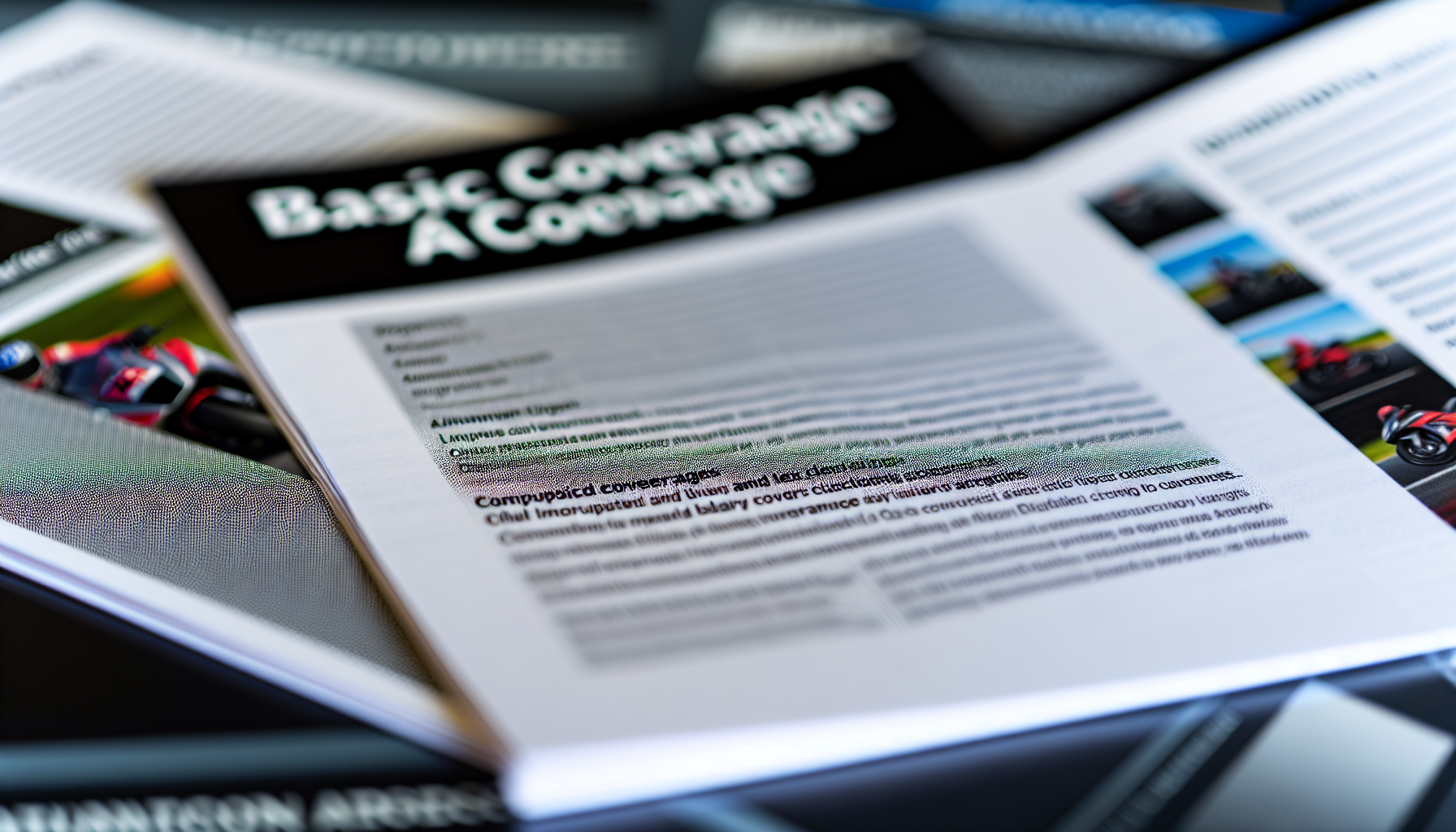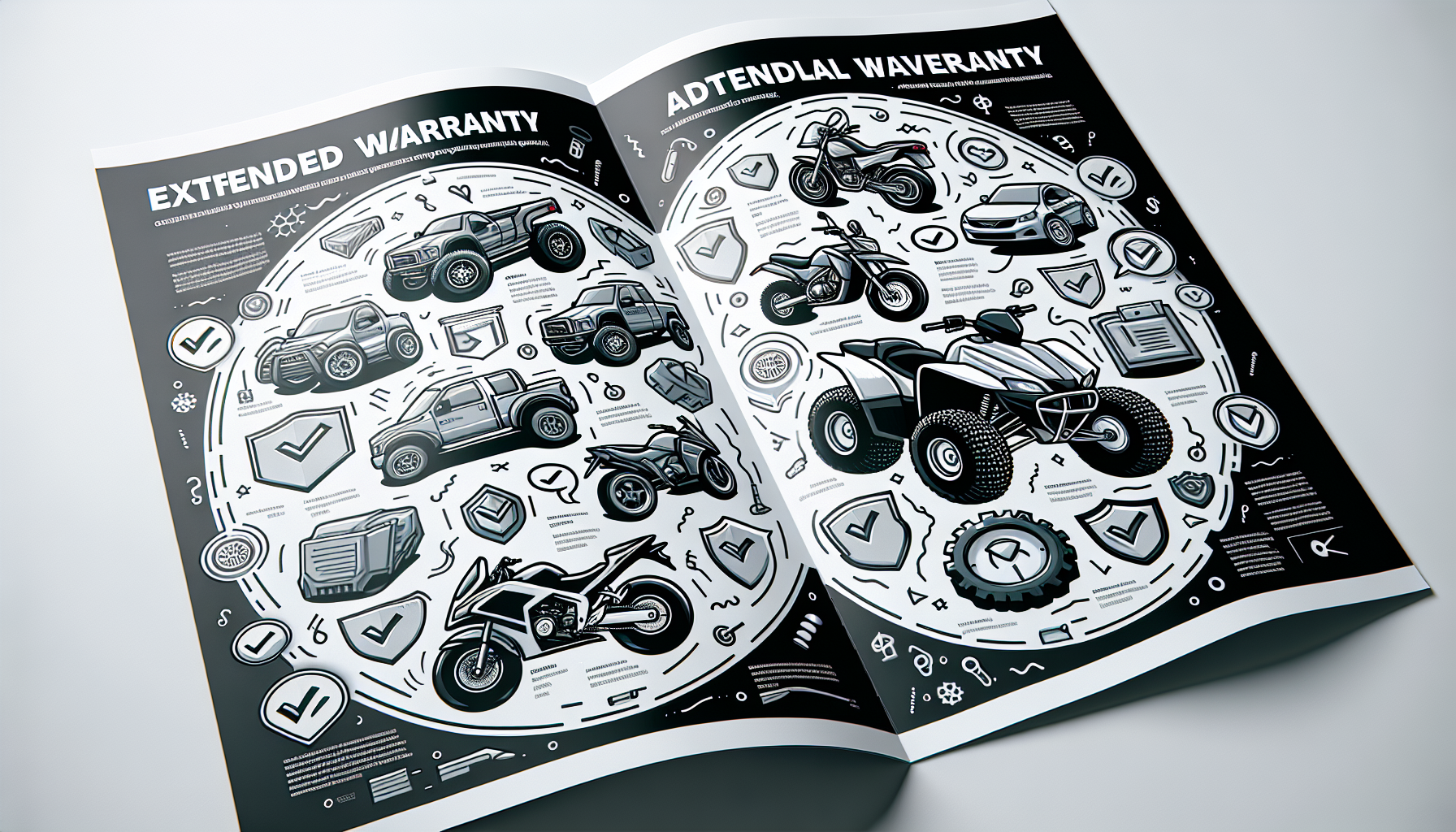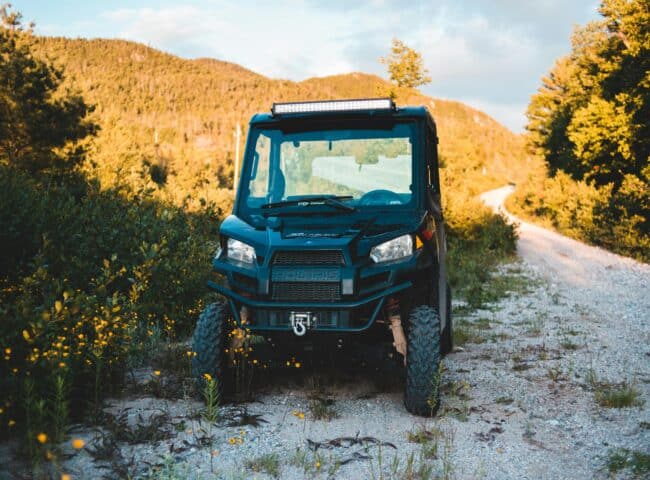What does a powersports warranty typically cover? Whether it’s your motorcycle, ATV, or snowmobile, key protections such as repair costs, parts replacements, and emergency support are often included. This guide details the types of coverage included in a powersports warranty, giving you clarity on what to expect when securing your vehicle.
Key Takeaways
- Powersports warranties provide extensive protection for various vehicles, including motorcycles, ATVs, and personal watercraft, from unexpected repair costs and may offer additional benefits like roadside assistance and military discounts.
- Manufacturer warranties typically cover defects in materials and workmanship for a limited duration, with options to extend; specialized coverage is also available for off-road and marine vehicles, catering to their unique needs and environmental exposures.
- Warranty claims should be carefully managed with proper documentation and maintenance records, working with authorized dealerships to ensure compliance with the terms for a smooth claim process, while recognizing exclusions like racing use and unauthorized modifications may void coverage.
Understanding Powersports Warranties

Just like a safety helmet protects you while riding, motorcycle insurance and powersports warranties safeguard your vehicle. Be it motorcycles, ATVs, UTVs, or personal watercraft, they all need protection from unexpected repair costs. Warranties can cover anything from minor fixes to major overhauls and even include additional services like emergency roadside assistance.
Imagine the peace of mind knowing that even an older vehicle, up to 20 model years old, can still be covered under specific service contracts. In some cases, companies even offer military advantage discounts, adding a cherry on top of this comprehensive coverage cake.
Types of Powersports Vehicles
The world of powersports is as diverse as it is thrilling. From the freedom of a motorcycle to the rugged utility of an ATV, each vehicle offers a unique adventure. In the realm of motorcycles, we find two or three-wheeled vehicles utilized for various activities – commuting, traveling, or social endeavors. Then we have ATVs, also known as four wheelers, designed for off-road use, often featuring three or four wheels, with some models even equipped with six wheels for navigating challenging terrains.
But the ride doesn’t stop here. The variety extends to:
- Trikes
- Scooters
- Mopeds
- Dirt bikes
- E-bikes
- UTVs (utility vehicles)
- Golf carts
- Snowmobiles
- Personal watercrafts
In the world of powersport vehicles, most states have regulations in place for their use and operation, making powersports coverage essential for enthusiasts.
Importance of a Warranty
A powersports warranty can provide the following benefits:
- Alleviate the financial burden of expensive repair bills by covering breakdown-related expenses
- Include extra benefits such as towing services
- Offer benefits for senior citizens at no extra cost
Thanks to 24/7 claims administration, warranty holders can relish in worry-free ownership. Meanwhile, authorized dealerships prioritize vehicle maintenance in line with warranty service intervals.
Coverage Offered by Manufacturers

When you purchase a new motorcycle, it typically includes a basic manufacturer warranty that covers the vehicle from top to bottom for a specified period or mileage. Some manufacturers even go the extra mile. For example, Kawasaki offers an extended factory warranty of 36 months for their side-by-sides, surpassing the industry’s standard warranty duration of 6 to 12 months for most other UTVs.
Basic Coverage
So, what exactly does a basic manufacturer warranty cover? Well, for personal watercraft, these warranties are designed to cover defects in materials and workmanship, rather than damages from environmental factors or usage. They often include a tiered coverage system where body defects are covered within the first year.
Duration of Coverage
Duration of coverage largely depends on the type of vehicle and the manufacturer’s terms. For instance, personal watercraft usually come with a 1-year standard warranty, extendable up to 5 years. Take note that coverage can be swayed by usage factors. Engine hours, for instance, significantly affect the powertrain warranties of powersports vehicles, especially those in high-idle situations.
Extended Warranties: Advantages and Options

An extended warranty can provide an extra layer of protection, complementing the basic manufacturer warranties. Here are some benefits of extended warranties:
- They cover both new and used vehicles
- They offer unlimited hours and miles
- They ensure a worry-free riding experience for riders
- They serve as a financial safeguard, protecting owners from hefty repair costs that may arise once the manufacturer’s warranty has lapsed.
Some extended warranties even provide extra protection for accessories and custom parts that weren’t covered under the initial manufacturer’s warranty, catering to the personalization needs of powersports enthusiasts.
Additional Coverage
The beauty of extended warranties lies in the additional coverage they offer. For instance, they can cover wear-and-tear items not typically covered by traditional warranties. They may also offer theft protection, compensating up to $3,000 towards a new vehicle if stolen, and GAP coverage for loan balance differences in the event of a total loss. From lifetime battery replacement for the original owner to appearance protection plans safeguarding against environmental damage to paint and chrome, extended warranties often offer comprehensive coverage for crucial components such as the engine, electrical system, transmission, suspension, fuel system, and brakes.
Flexible Terms and Deductibles
Extended warranties also offer flexibility in terms of duration and deductibles. Owners can choose between:
- higher deductibles for lower upfront costs
- lower deductibles for a higher premium
- some warranties even offering a $0 deductible on new vehicles and a $25 deductible on used ones.
They also offer a range of health insurance terms, often up to an additional 5 years, allowing owners to match the coverage period to their anticipated ownership length.
Specialized Coverage for Off-Road Enthusiasts

For off-road enthusiasts, there’s a whole world of specialized coverage. Manufacturers like Can-Am, Polaris, and Kawasaki provide specialized warranties and protection plans specifically for UTVs and other off-road vehicles. Remember that standard auto insurance policies don’t cover ATV accidents; hence, specialized coverage or a dedicated off-road vehicle insurance policy can be necessary.
Off-Road Protection
Off-road vehicles require a unique kind of protection to protect them from harsh conditions and rugged terrains that can cause significant wear and tear. Therefore, having a warranty that caters to these specific needs is essential for off-road enthusiasts.
Trail Access Requirements
Trail access requirements can also dictate the need for specific warranty coverage. Some trails and parks may require specific warranty coverage or protection plans for off-road vehicles to ensure damages incurred during off-road use are managed financially. ATV insurance is typically required on state-owned lands and parks, and in states that allow ATVs on the street.
Personal Watercraft Warranties

Let’s not forget about personal watercraft. These vehicles, which include sit-down and stand-up models, are a specialized category of powersports vehicles designed for recreational use on water. Personal watercraft owners can often benefit from extended warranties, with potential for additional coverage up to 3 or 4 years when purchases are made during boat show promotions.
Marine-Specific Coverage
Marine-specific warranties offer coverage tailored to the unique needs of marine environments. They often include coverage for water damage, ensuring protection in events that are commonplace in marine environments. They also cover key components such as the hull, which is especially vulnerable to corrosion.
Additional Coverage Options
Just like their land counterparts, personal watercraft can also benefit from additional coverage options, such as liability coverage. Extended warranties for personal watercraft can include additional perks such as roadside assistance, trip interruption protection, and rental vehicle benefits.
Warranty Exclusions and Limitations
While warranties offer extensive protection, they come with their share of exclusions and limitations. For instance, extended vehicle warranties typically exclude comprehensive and collision coverage for property damage resulting from accidents, natural disasters, lightning strikes, or hail damage. Normal wear and tear or damage due to lack of regular maintenance are also commonly excluded from warranty coverage.
Racing and Competitive Use
Racing and competitive use can also affect warranty coverage. Powersports warranties typically exclude coverage for damages incurred during:
- Racing or competitive use
- High-performance driving education events
- Time trials
- Track days
Also, off-road vehicle coverage, including collision coverage, does not typically extend to the use of ATVs or UTVs on highways or local roads, except for crossing at marked intersections, and policies generally exclude organized racing activities.
Unauthorized Modifications
Modifications can also impact warranty coverage. Unauthorized modifications made to a vehicle can lead to warranty exclusions, meaning the warranty will not cover any issues that arise as a result of such changes.
Making a Warranty Claim: Tips and Best Practices
Finally, let’s look at how to make a warranty claim. The process involves several crucial steps including identifying the issue, consulting the warranty policy, and contacting the dealership or manufacturer.
Documentation and Maintenance Records
One cannot emphasize enough the significance of documentation and maintenance records. A complete record of all preventive maintenance work in accordance with the manufacturer’s schedule is essential for warranty recovery. Accurate and thorough documentation practices enhance the likelihood of receiving goodwill assistance from the manufacturer after the warranty period has ended.
Working with Authorized Dealerships
Collaborating with an authorized dealership can ease the claim process. Authorized dealerships have a direct line to manufacturers, often resulting in the speedy availability of necessary parts and resulting in quicker vehicle repair and reduced downtime.
Summary
In conclusion, understanding the ins and outs of powersports warranties is crucial if you’re a powersports enthusiast. From the different types of vehicles to the importance of warranties, from manufacturer provided coverage to extended warranties, and understanding the exclusions and limitations, we’ve covered it all. As you ride into the thrilling world of powersports, remember to ensure your ride is protected with the right warranty coverage.
Frequently Asked Questions
What is not covered under extended warranty?
An extended warranty typically does not cover normal wear and tear, preexisting damage, routine maintenance, or damage from lack of maintenance or abuse. Heavily modified vehicles are also not likely to be covered.
What does insurance on an ATV cover?
ATV insurance can cover liability, collision, comprehensive, and underinsured/uninsured motorist coverage, protecting against damages, injuries, theft, vandalism, and natural disasters. It can also include medical payments for accidents, providing comprehensive protection for ATV owners.
What does my motorcycle warranty cover?
Your motorcycle warranty typically covers faulty mechanical and electrical components, such as the engine, that are not the result of your own actions. If something goes wrong with your motorcycle, the company will pay for the repair or replacement.
Are damages from racing covered under powersports warranties?
No, damages from racing are generally not covered under powersports warranties. It’s important to be aware of this exclusion when considering warranty coverage for your vehicle.
How can unauthorized modifications affect my warranty coverage?
Unauthorized modifications to a vehicle can lead to warranty exclusions, meaning the warranty will not cover any issues that arise as a result of such changes. It’s important to adhere to the manufacturer’s guidelines to ensure warranty coverage is maintained.



